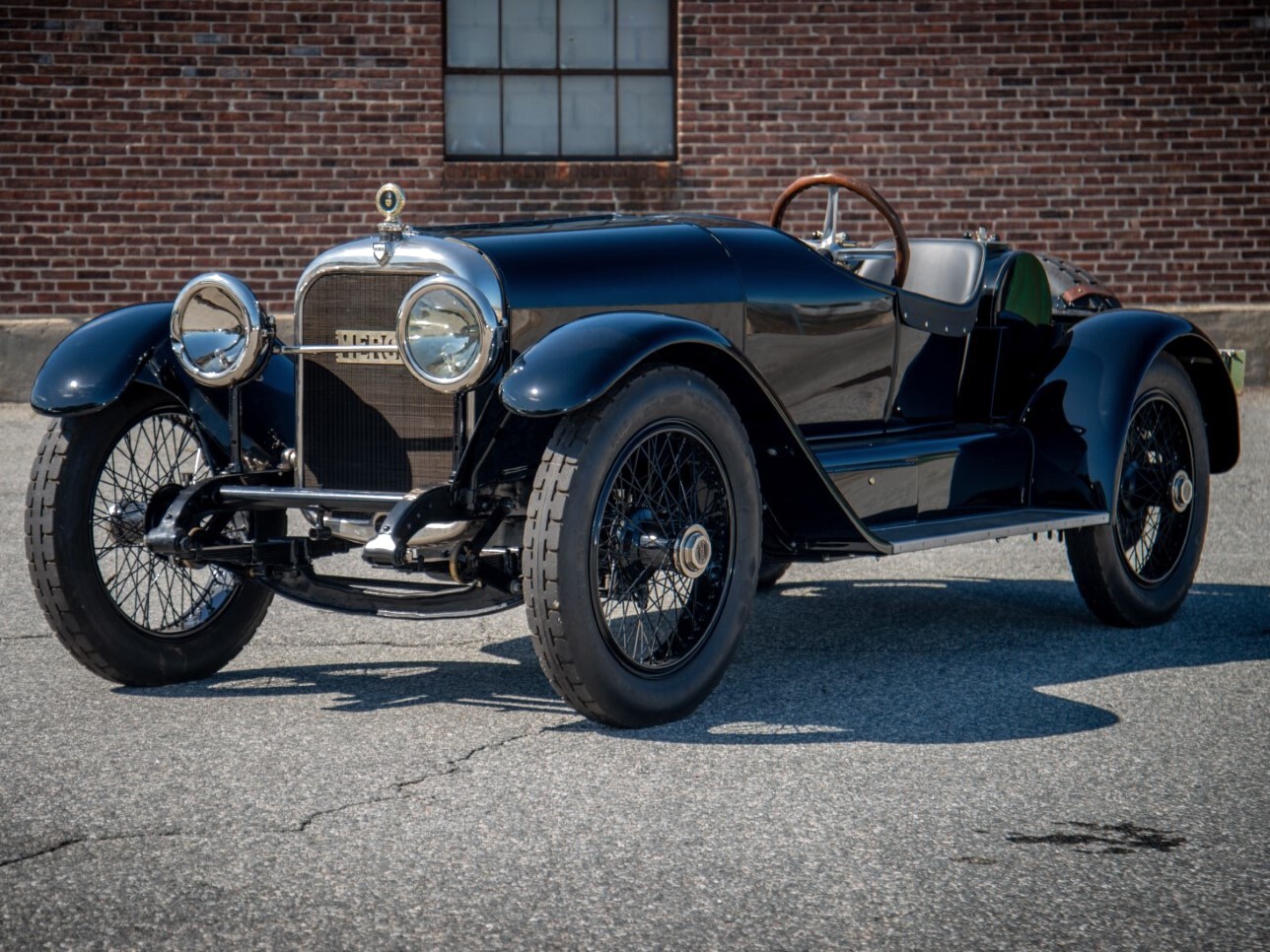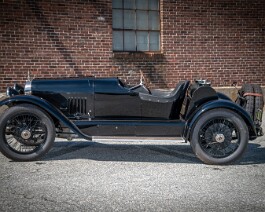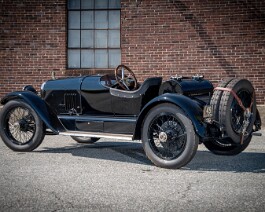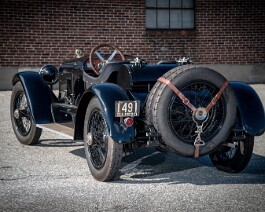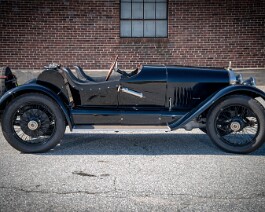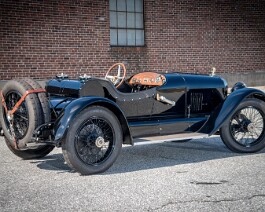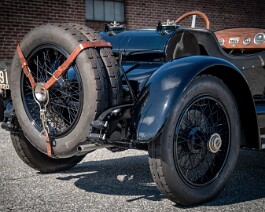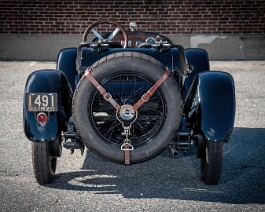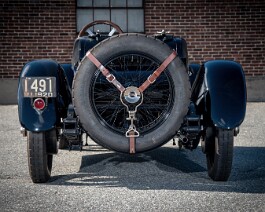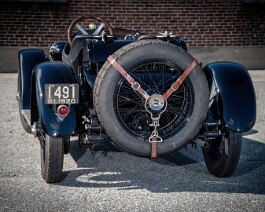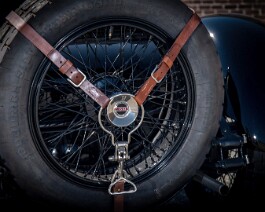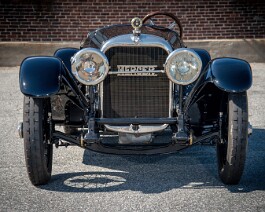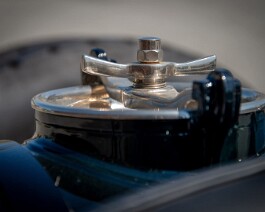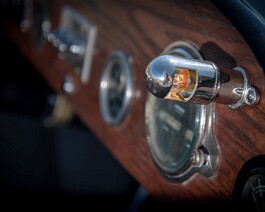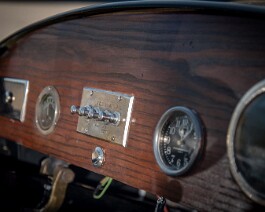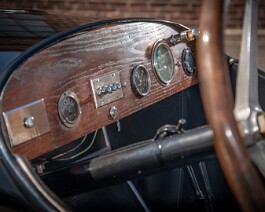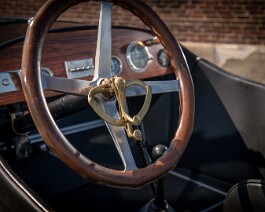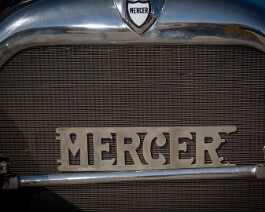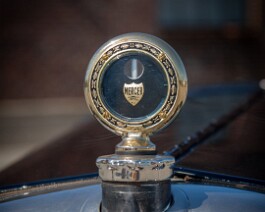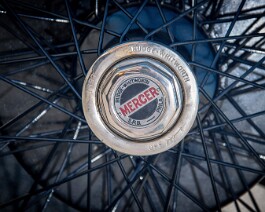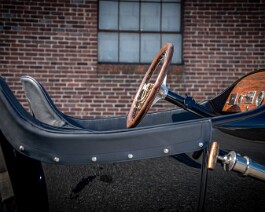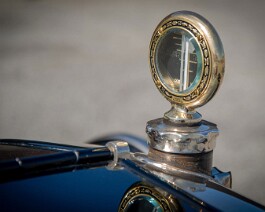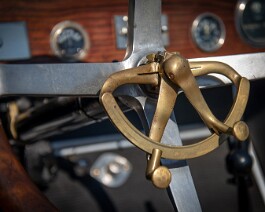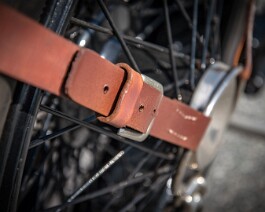1921 Mercer Raceabout
Inventory Number: 3080
$295,000
- ENGINE: 298.2 cu. in. Four-Cylinder with 3 3/4 inch Bore and 6 3/4 inch Stroke.
- ENGINE NO: 4758
- HP: 70
- WHEELBASE: 115 inches
- WEIGHT: 3800 pounds
- GAS TANK: 25-gallon. Extra 5-gallon oil tank for high-speed driving.
- TIRES: 32 x 4 1/2
- MANUFACTURED: Trenton, New Jersey
The Deiling-designed Mercers from 1915 were powered by a 298 cubic-inch side-valve 4-cylinder with single ignition and a 4-speed transmission. The engine was rated 22.5 NACC horsepower, and its earliest versions were said to make 70 brake horsepower. Brakes were installed only on the rear wheels. Suspension employed live axles at both ends, suspended from semi-elliptical leaf springs. Deiling was one of the first American designers to add Houdaille lever action friction shock absorbers to the suspension, a feature that vividly illustrates his desire to enhance Mercers' ride and handling.
The new Raceabout body also gave its occupants more protection from the elements and the vicissitudes of the generally marginal roads of the time. The body now had sides protecting the driver's and passenger's legs although the seat back still formed the back of the passenger compartment, and the fuel still rode on the rear deck in a round bolster tank. Fenders enclosed to the frame kept detritus from being kicked up onto the bodywork and the occupants, and a full-width flat glass windshield gave added protection, although it folded down for high-speed runs. In effect, the Model 22-70 Mercer Raceabout was refined, improved, and easier to own and drive, applying the lessons learned in five years of production of the Mercer Type 35.”
-Bonhams, The Scottsdale Auction
The Mercer Automobile Company
The Mercer Automobile Company was founded in 1909 by Ferdinand Roebling, Washington A. Roebling II, and John L. Kuser in Hamilton Township, New Jersey, to produce high-performance cars. The company evolved from the takeover of the Walter Automobile Company, manufacturer of the Walter and Roebling-Planche automobiles, after the Roebling family made a fortune from the creation of tensioned wire rope suspension bridges, such as the Brooklyn Bridge. They teamed up with the Kuser family, owners of a vacant brewery, into which they moved their operation, and the company was run and managed by the Roeblings.
The first Mercer, designed with engineer Finley Robertson Porter, became available for purchase in 1910 as a speedster, toy tonneau, or touring car with a four-cylinder L-head Beaver engine. They were relatively expensive and were advertised with slogans such as, “It is possible to thread a needle while traveling 60 mph.” In 1912, Washington died aboard the Titanic, and by 1914, Porter had resigned, and Eric H. Delling designed a new L- head, four-cylinder engine with at least 70 HP. He added windshields, bench seats, enclosed coachwork, and Houdaille shock absorbers to the product line before departing in 1916. The following year, F.W. Roebling died, followed shortly by his brother and ownership passed to an investment syndicate by the name of the Mercer Motors Company. Led by Emlen Hare, former Vice President of Packard, they acquired an interest in Locomobile and Crane-Simplex, but the syndicate had collapsed in the post-WWI economy by 1921. Control was returned to the founding families, and manufacturing continued until 1925, producing an estimated 5,500 vehicles.
The Mercer automobiles would be known as possibly the first American sports cars, designed for the track and the street with high-performance racing capabilities. They were highly sought-after for their exceptional handling, quality construction, and powerful performance. Mercers competed fiercely on the track with the Stutz Bearcat as a dominant force in early American racing, reaching speeds of 80 mph. The high-quality materials and craftsmanship that went into their design resulted in the survival of 140 Mercer automobiles, now coveted by the collector and the history buff alike.
